Archive 1308: Daily Pix FULL SIZE
(For personal use only: NOT public domain)
Mmm, right click,
add, set as background...
To: Today's:
Desktop size download, Today's FAQs,
SW Archive 1270,
SW Archive 1271, SW Archive
1272, SW Archive 1273,
SW Archive 1274, SW Archive
1275, SW Archive 1276,
SW
Archive 1277, SW Archive 1278,
SW Archive 1279, SW Archive
1280, SW Archive 1281,
SW Archive
1282, SW Archive 1283,
SW Archive 1284,
SW Archive 1285,
SW Archive 1286,
SW Archive 1287,
SW Archive 1288,
SW Archive 1289,
SW Archive
1290, SW
Archive 1291, SW Archive 1292,
SW Archive 1293,
SW Archive 1294,
SW Archive
1295, SW Archive
1296, SW Archive 1297,
SW Archive 1298,
SW Archive 1299,
SW Archive 1300,
SW Archive 1301, SW Archive
1302, SW Archive 1303,
SW Archive 1304, SW Archive
1305, SW Archive 1306,
SW Archive 1307, SW Archive
1309, SW
Archive 1310,
Freshwater Pic
of the Day Link
,
|
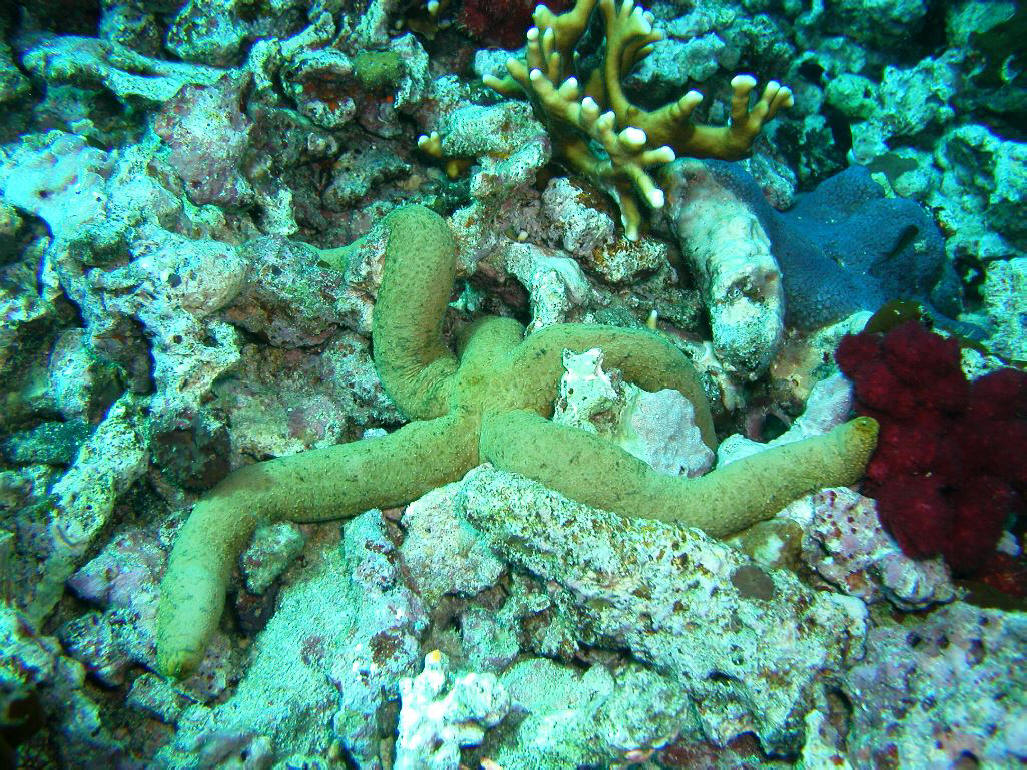
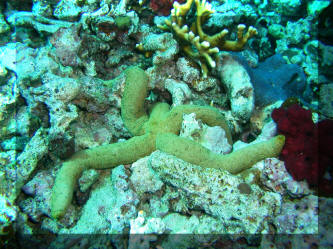
|
|
Linckia guildingi Gray 1840, the Green
Linckia. Usually with five (sometimes 4 or 6) arms that are
cylindrical in cross section. Skin appears smooth but is coarse
with low, hard nodules. Though called "green" occurs in
other colors (tan, beige, brown, blue, reddish). Found in Indian, Pacific,
Atlantic Oceans and Caribbean. Fiji
pic. |
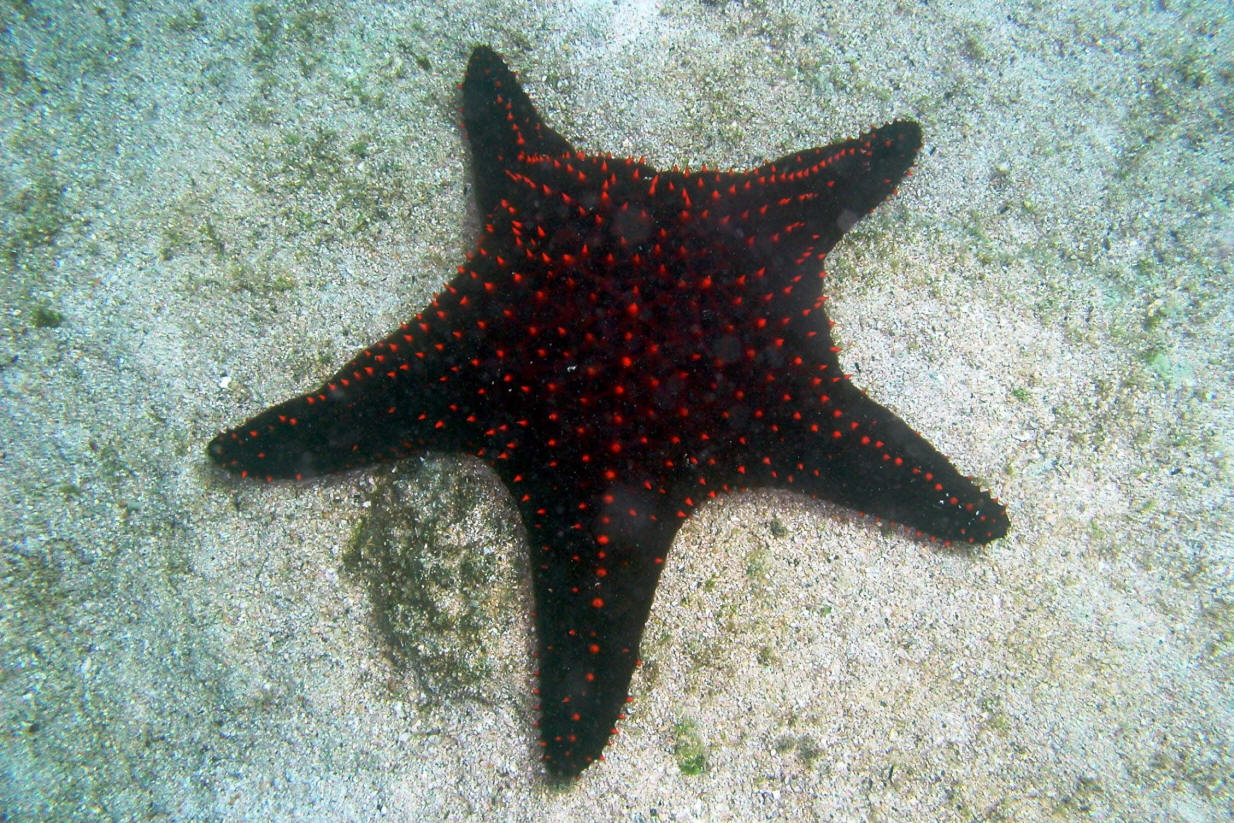
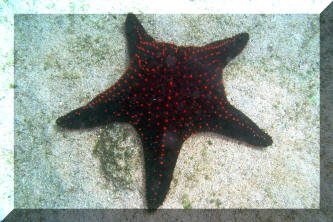
|
|
Pentaceraster cumingi (Gray 1840), the Panamic Cushion Star.
Family Oreasteridae. To 13.4 inches in diameter. Mid to Eastern Pacific;
Hawaii, Sea of Cortez to Peru and Galapagos. Variably red, orange to
greenish blue bodied with large red spines. Feeds on micro-fauna in
substrate, benthic algae, seagrass and other echinoderms. Usually found
on sandy bottoms from shallow to 180 meters depth. Galapagos pic. |
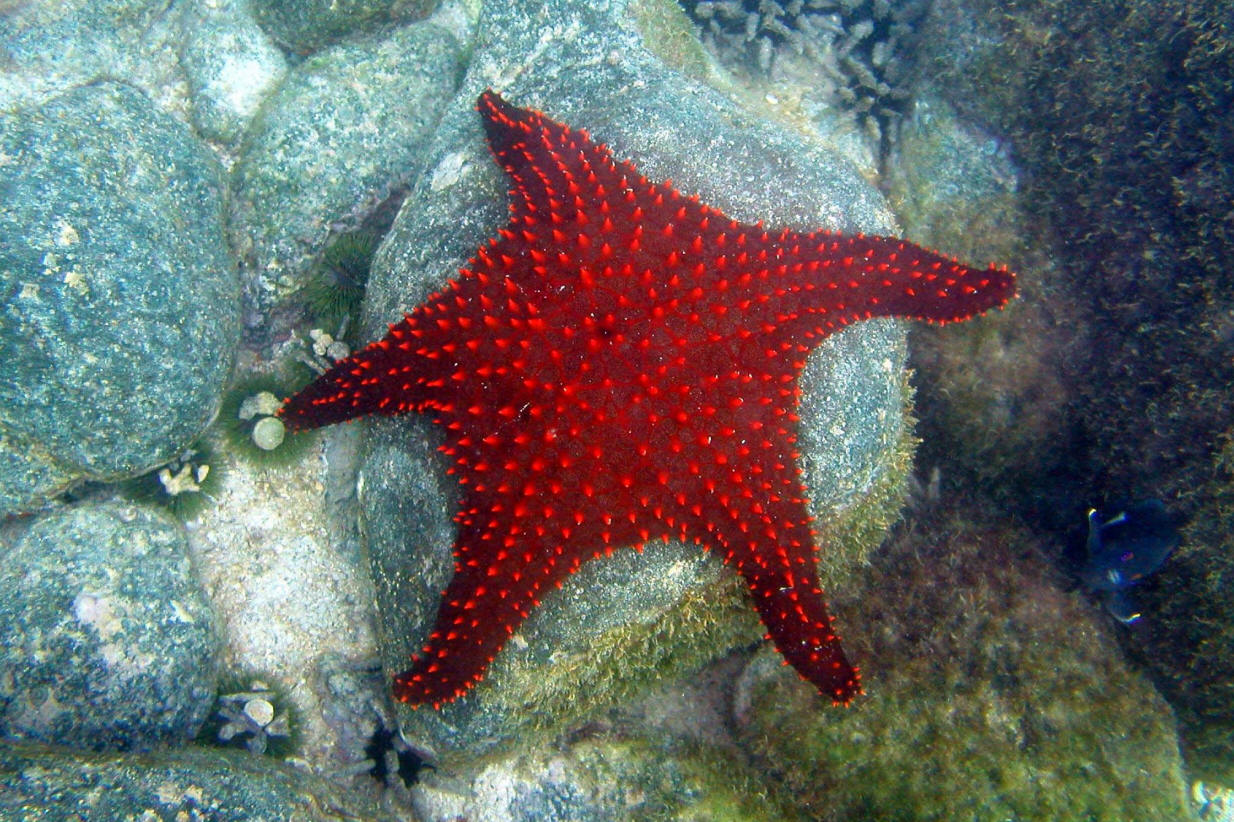
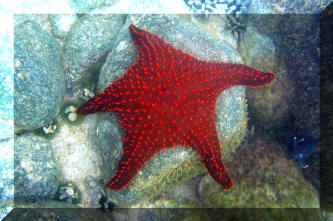
|
|
Pentaceraster cumingi (Gray 1840), the Panamic Cushion Star.
Family Oreasteridae. To 13.4 inches in diameter. Mid to Eastern Pacific;
Hawaii, Sea of Cortez to Peru and Galapagos. Variably red, orange to
greenish blue bodied with large red spines. Feeds on micro-fauna in
substrate, benthic algae, seagrass and other echinoderms. Usually found
on sandy bottoms from shallow to 180 meters depth. Galapagos pic. |
|
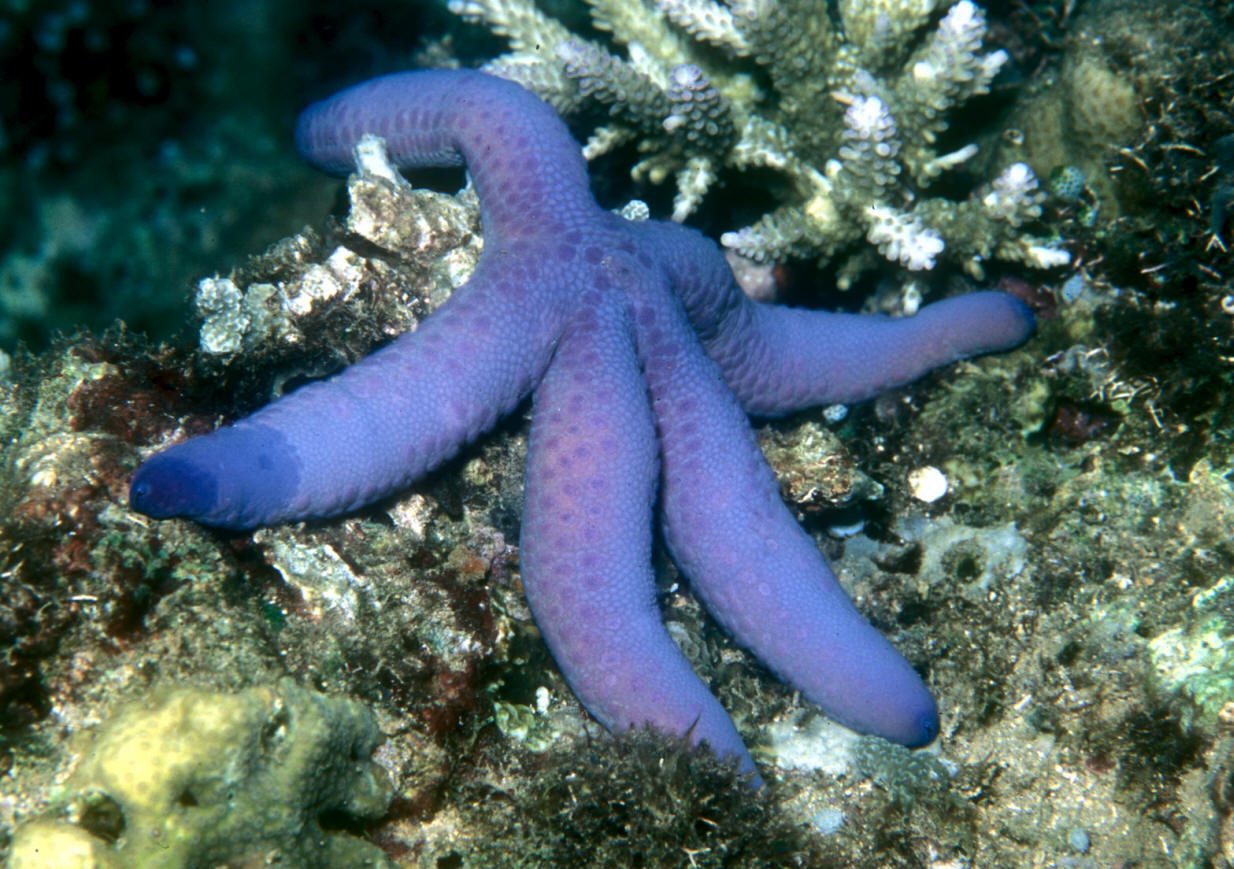
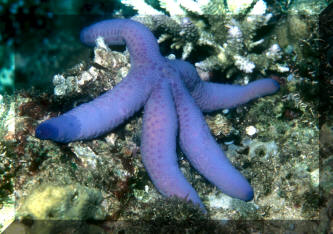
|
|
Linckia laevigata (Linnaeus 1758), Linckia
Seastar. Blue and greenish. Also found in other
colors, brown, tans, violet to burgundy, even mottled... And there
are other species of the genus offered to the trade. This animal is
very (95+ % IME) often doomed from the retailer to aquarists...
having suffered too much damage and neglect in the process of
collection, holding, shipping... Look for damage (ex. right) and
avoid such obviously poor specimens. In the wild this is an algae,
bacteria, detritus feeder... that needs space (hundreds of gallons)
and mulm (muck, dirt, call it what you will, on the bottom of its
system to survive. My advice, look to other genera, species of
seastars. Here in Fiji.
|
|
|

